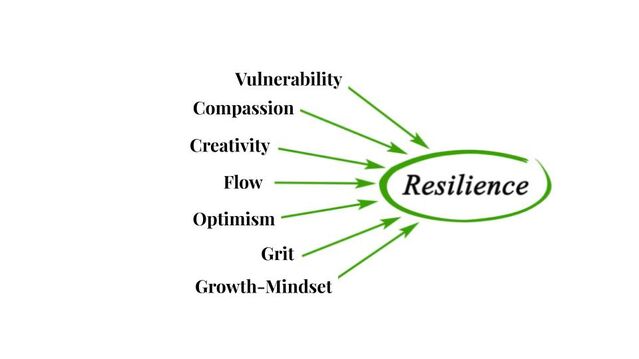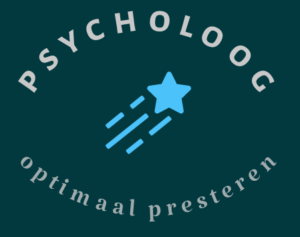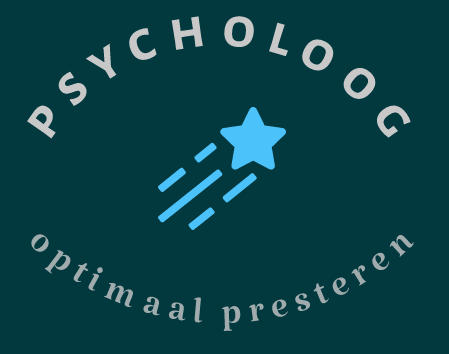Het afleren dat ons weer kan verbinden met ons natuurlijk veerkrachtige zelf.
Bron: Psychology Today, Jessica Del Pozo

Veerkracht wordt gedefinieerd als ons vermogen om ons aan te passen aan en te herstellen van tegenspoed. Veel levenservaringen kunnen ons manieren leren om ons los te koppelen van ons natuurlijke vermogen om ons aan te passen en te groeien, waardoor we niet zo veerkrachtig kunnen zijn als we werkelijk zijn.
De onderstaande elementen kunnen ons helpen patronen te identificeren die we willen afleren of afmelden, evenals manieren waarop we ons willen inzetten om onze persoonlijke veerkracht te vergroten. Het herkennen van deze elementen kan ons in staat stellen om te verschuiven naar authentieke manieren om de volheid van onze levenservaring te omarmen, terwijl het minimaliseren van de negatieve impact die uitdagende gebeurtenissen op ons hebben.
Deze zeven belangrijke elementen van veerkracht, samen met hun tegenelementen hieronder zijn afkomstig uit deel 3 van de cursus Duurzame veerkracht, een klassenreeks die ik samenleen met Kevin Gallagher. De Serie Duurzame Veerkracht bevordert emotionele gezondheid en behoud van stabiliteit door ons vermogen om te veranderen en te groeien.

Elementen van veerkracht.Bron: Jessica Del Pozo
1. Kwetsbaarheid (Unlearning Defensiveness): Emotionele kwetsbaarheid is het hebben van de moed om eerlijk te verschijnen en gezien te worden zoals we zijn als we geen controle hebben over de uitkomst. Brene Brown’s onderzoek heeft onderzocht en gepopulariseerd kwetsbaarheid, destigmatizing het als een zwakte en helpt ons te realiseren kwetsbaarheid als een diepe menselijke kracht die ons verbindt met onszelf en anderen. Brown zegt: “Kwetsbaarheid is niet winnen of verliezen … Kwetsbaarheid is geen zwakte; het is onze grootste mate van moed.”
2. Compassie (Onttrekkende Onverschilligheid): Compassie is het sympathieke bewustzijn van ander’s nood met het verlangen om het te elimineren.1 Personen met een hoger zelfcompassie hebben minder leed gemeld in het gezicht van moeilijkheden, samen met een hogere hartslagvariabiliteit (HRV), een fysiologische maatstaf voor gezondheid en welzijn.2 Compassie vergt moed en bestendigt het ook.
“Diep geliefd zijn door iemand geeft je kracht, terwijl het houden van iemand diep geeft je moed.” – Lao Tzu
3. Creativiteit (Unlerarning Rigiditeit): Creativiteit wordt meestal gedacht binnen een artistieke context, maar creativiteit in het dagelijks denken is een belangrijk element van veerkracht. Creativiteit is de integratie van ideeën en het oplossen van problemen die leiden tot het ontstaan van iets nieuws. We hebben allemaal de capaciteit om te creëren – het kan zelfs worden beschouwd als een geboorterecht.
4. Flow (Unlearning Stagnation): Flow is de staat van actieve betrokkenheid waarbij vaardigheden en talenten zijn afgestemd op de eisen van de taak. Het wordt ervaren als een gevoel van onderdompeling in welke tijd en het zelf vervagen als we worden verpakt in de energie van het proces. In de meest recente Pixar film, Soul, Moonwind, een mysticus zonder grenzen, is in “de zone” leven in de stroom met wat hij graag doet.3 Zelfs als we niet kunnen worden in “de zone” de hele tijd, regelmatige stroom staten sterk verbeteren stemming en gevoel van welzijn.artikel gaat verder na advertentie
5. Optimisme (Unlearning Pessimisme):Optimisme is onze verwachting dat de toekomst goed zal zijn en dat ongunstige gebeurtenissen tijdelijk en specifiek zijn, in plaats van permanent en mondiaal. Optimisten rapporteren hogere niveaus van positieve emoties en blijken een hogere rustvv te hebben. Het schrijven van onze dankbaarheid, het bijhouden van wat we goed doen elke dag, of het beschrijven van de beste versie van onszelf, kan het welzijn te verhogen.5 Martin Seligman, oprichter van Positieve Psychologie zegt: Hoewel je je ervaringen niet controleren, kun je je uitleg controleren.
6. Grit (Unlearning Fragility): Grit is persistentie tijden doorzettingsvermogen, vastberadenheid, en toewijding. Grit is gevonden als een veel sterkere voorspeller van succes dan testscores, waar je naar school ging, of hoe natuurlijk getalenteerd je bent.6 Ik denk aan gruis als passie getemperd met geduldige persistentie.
7. Growth Mindset7 (Unlearning Fixed Mindset): Een groeimentaliteit bevordert nieuwsgierigheid en passie voor leren, helpt ons risico’s te omarmen en een reactie te kiezen wanneer dingen onze kant op gaan. Nodig om voortdurend te bewijzen dat onze moeite waard om te geloven dat onze persoonlijke kenmerken zijn vastgesteld kan ons gevoelig voor gevoelens van mislukking. Vergelijkbaar met grit, een groei mentaliteit is een geloof in inspanning, veerkracht, en groei in het gezicht van obstakels.
Elk van deze elementen van veerkracht wijst op het groeiproces dat een specifiek doel of resultaat vervangt. Ze benadrukken de doorbraak na de breuk; het groeiproces van het leven zelf.



